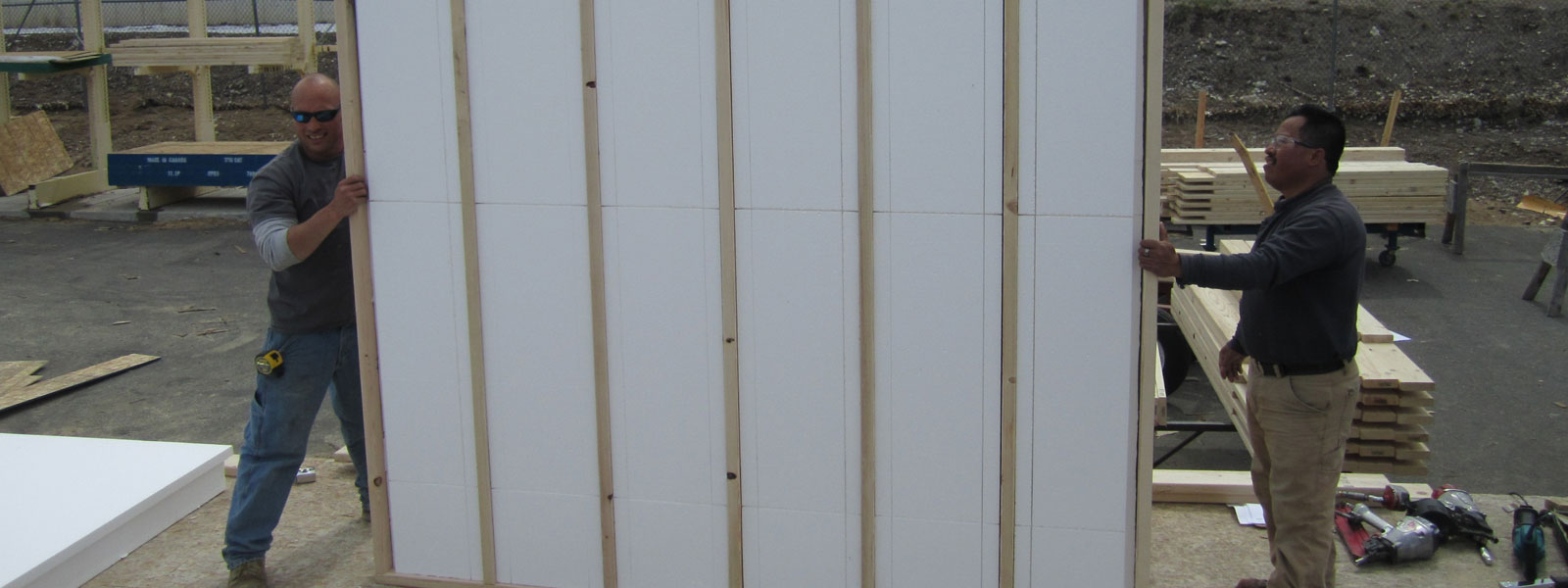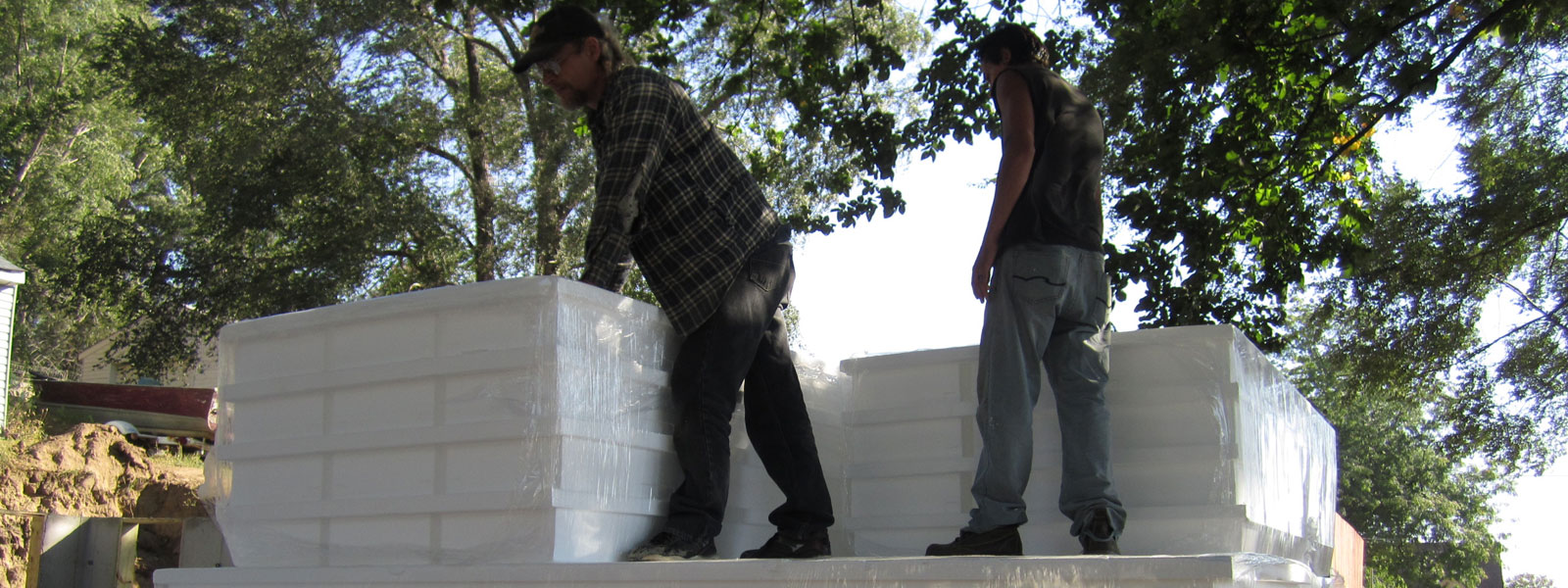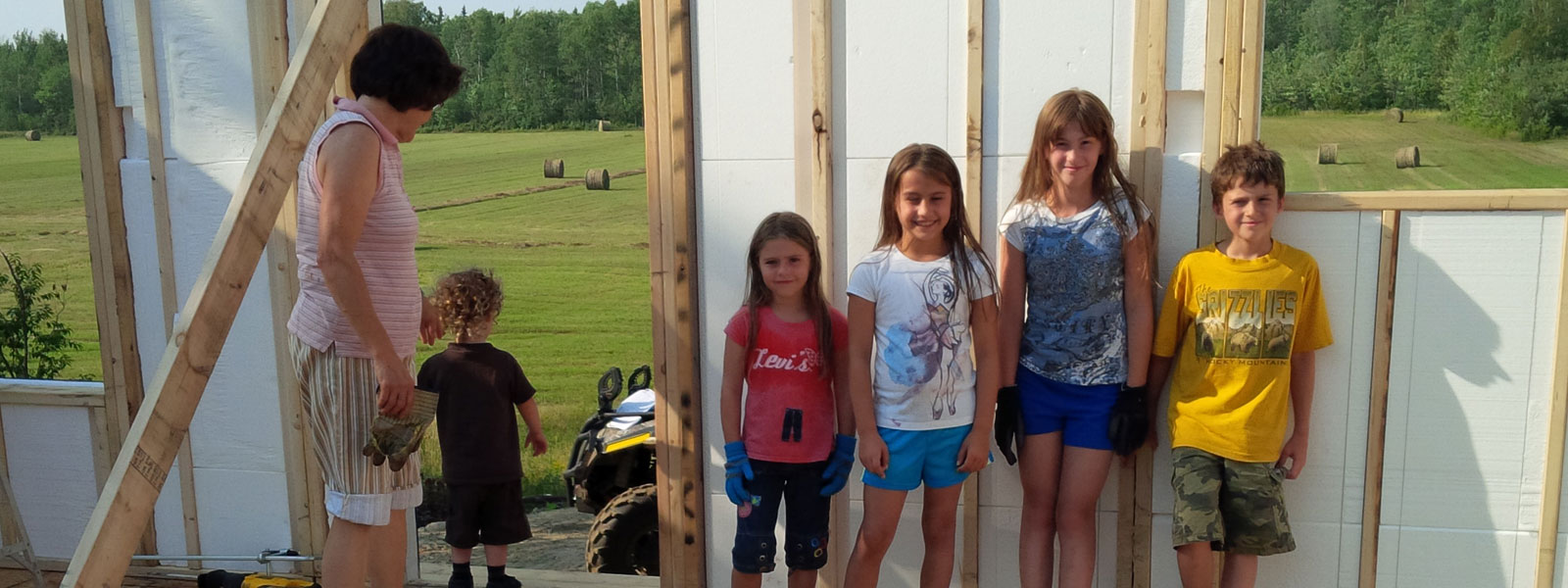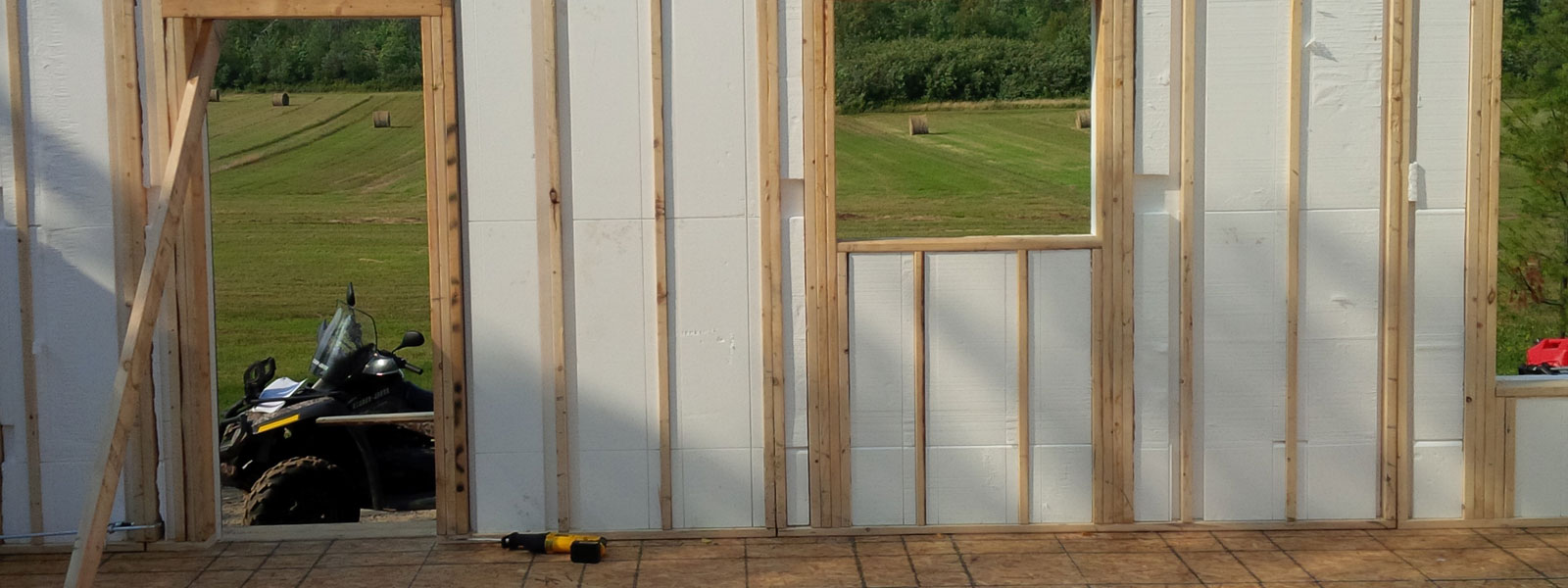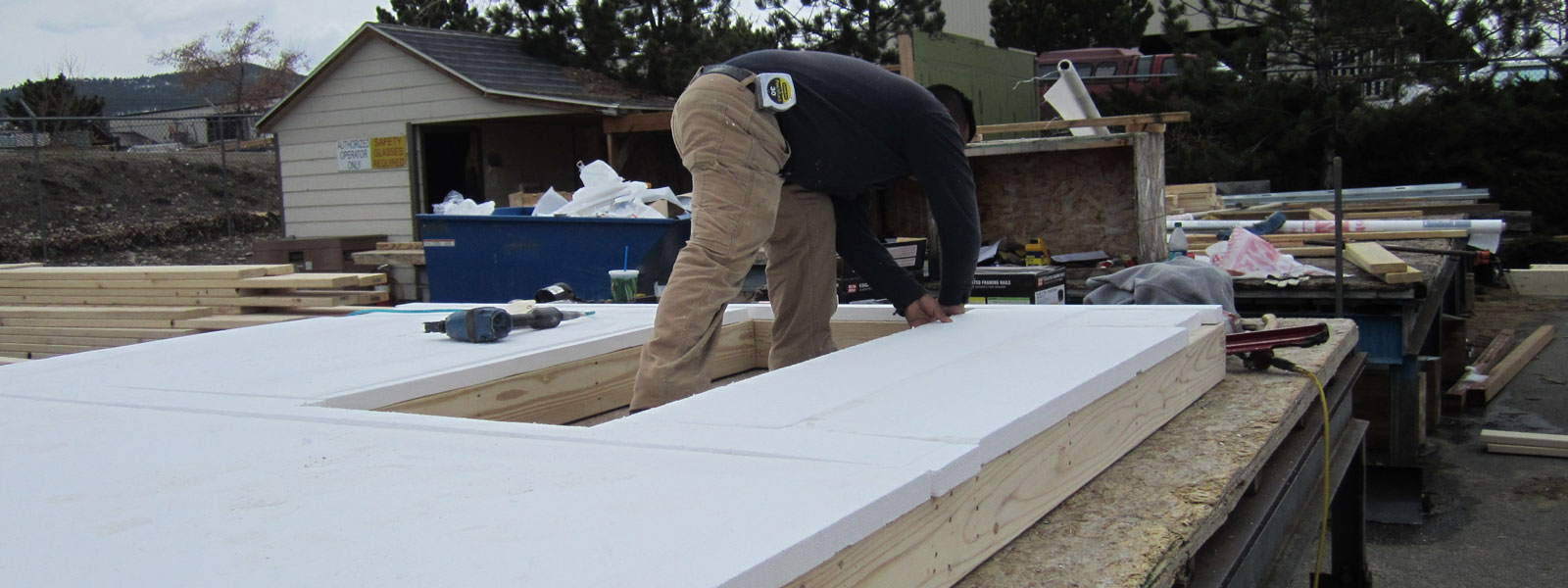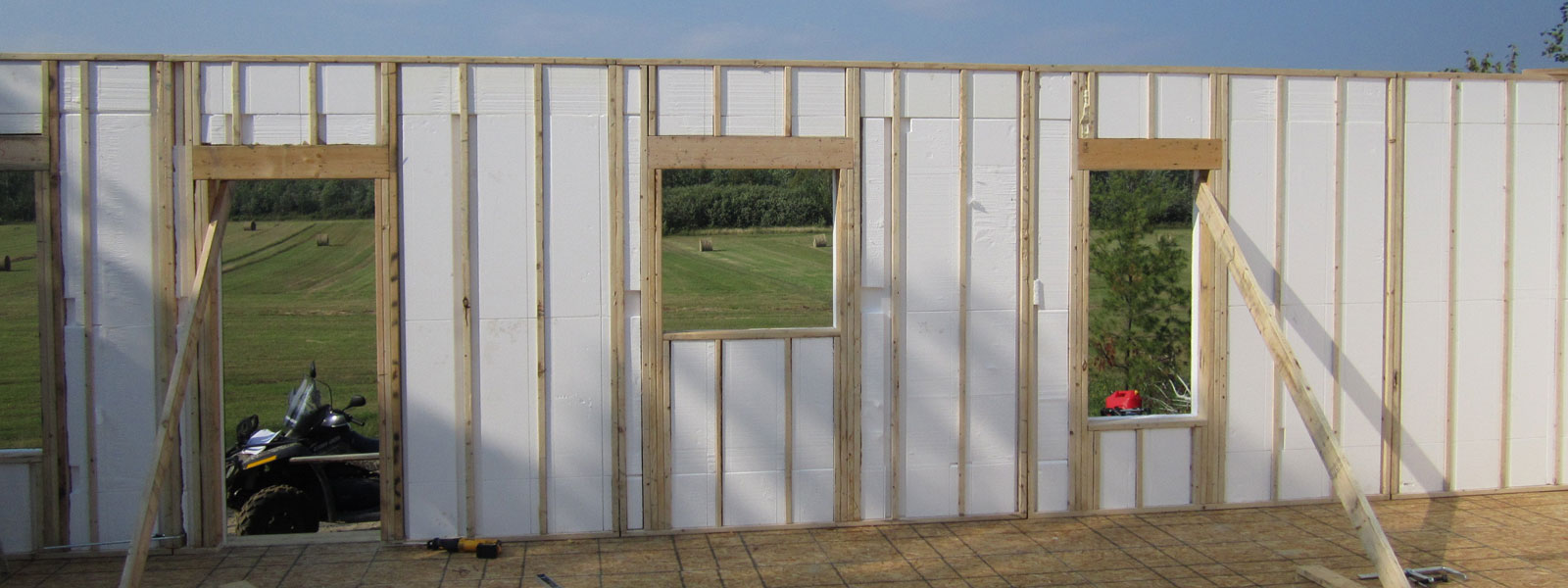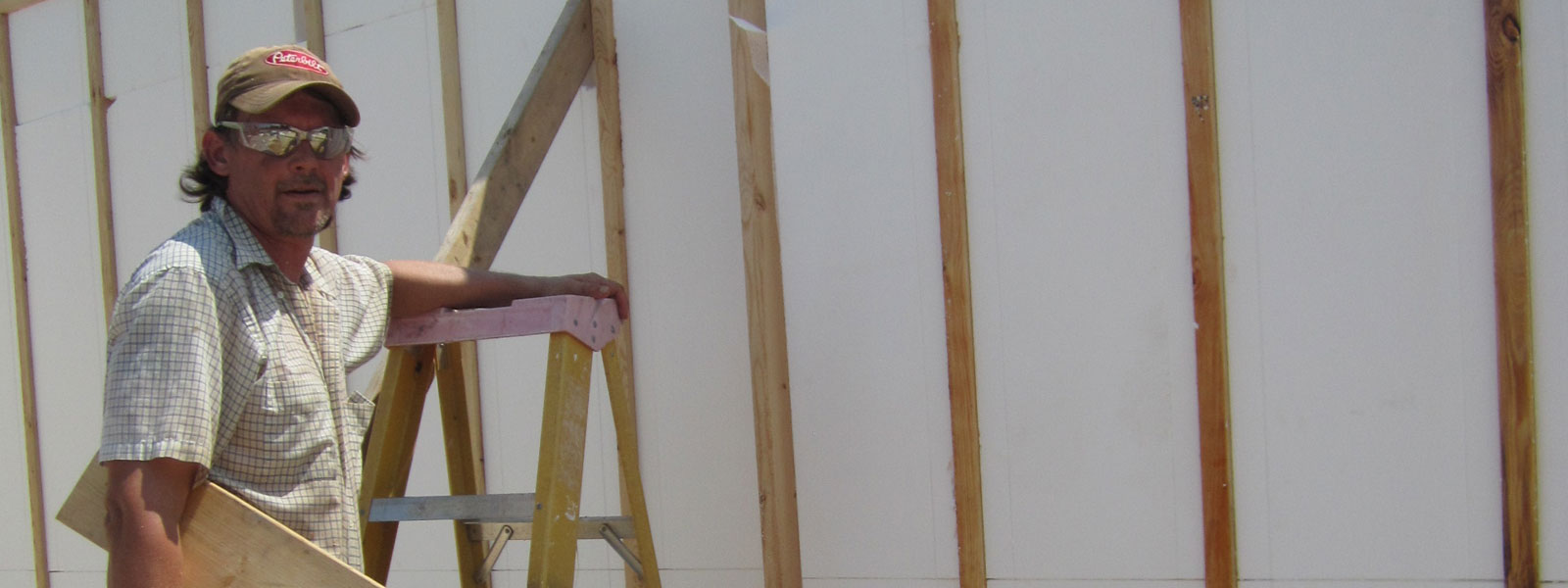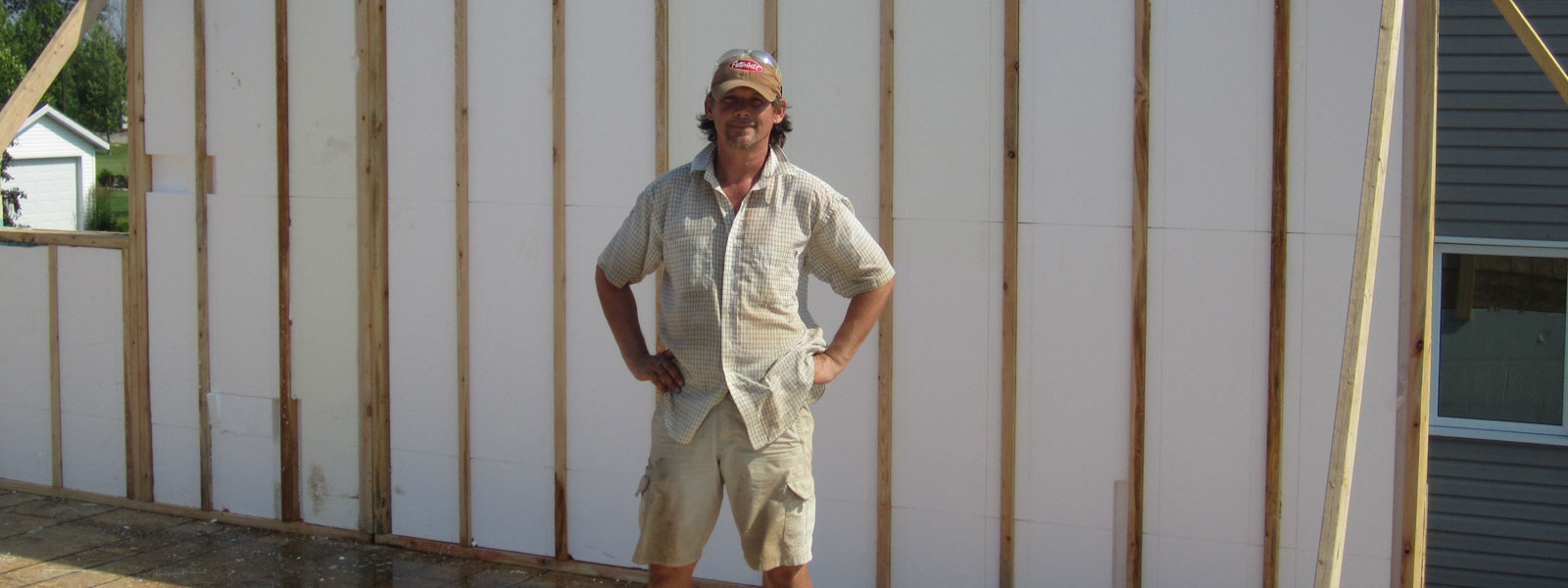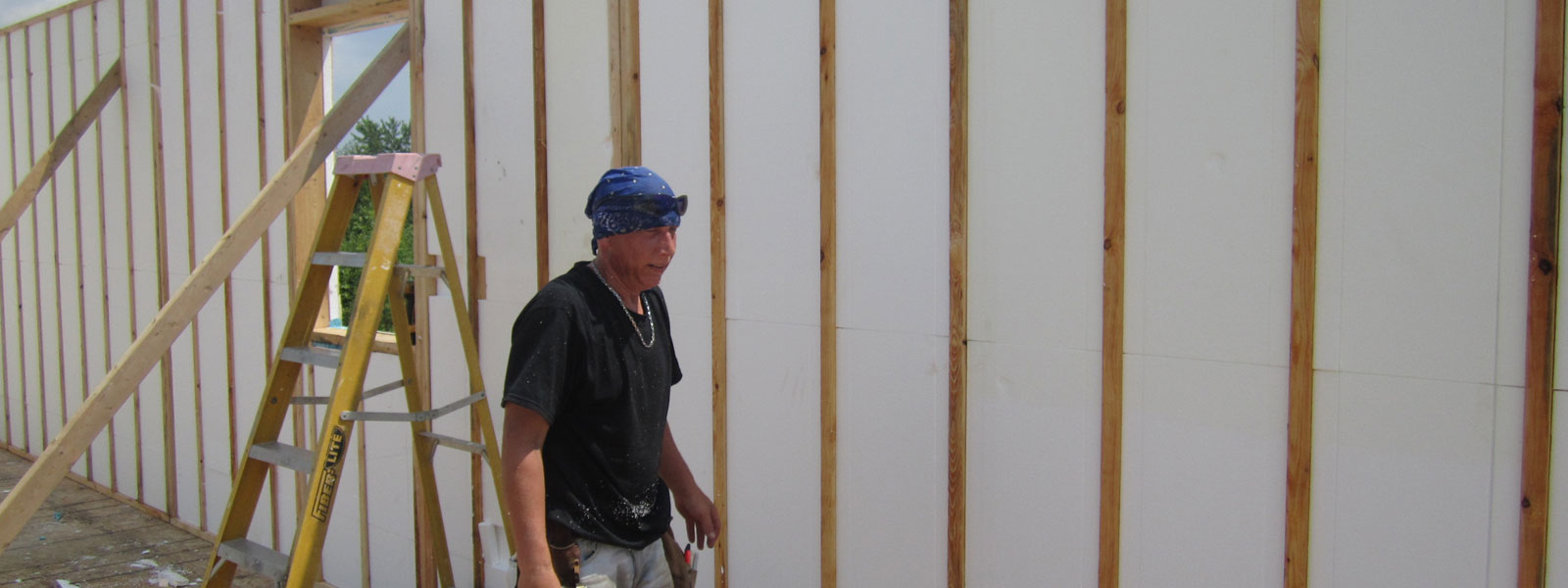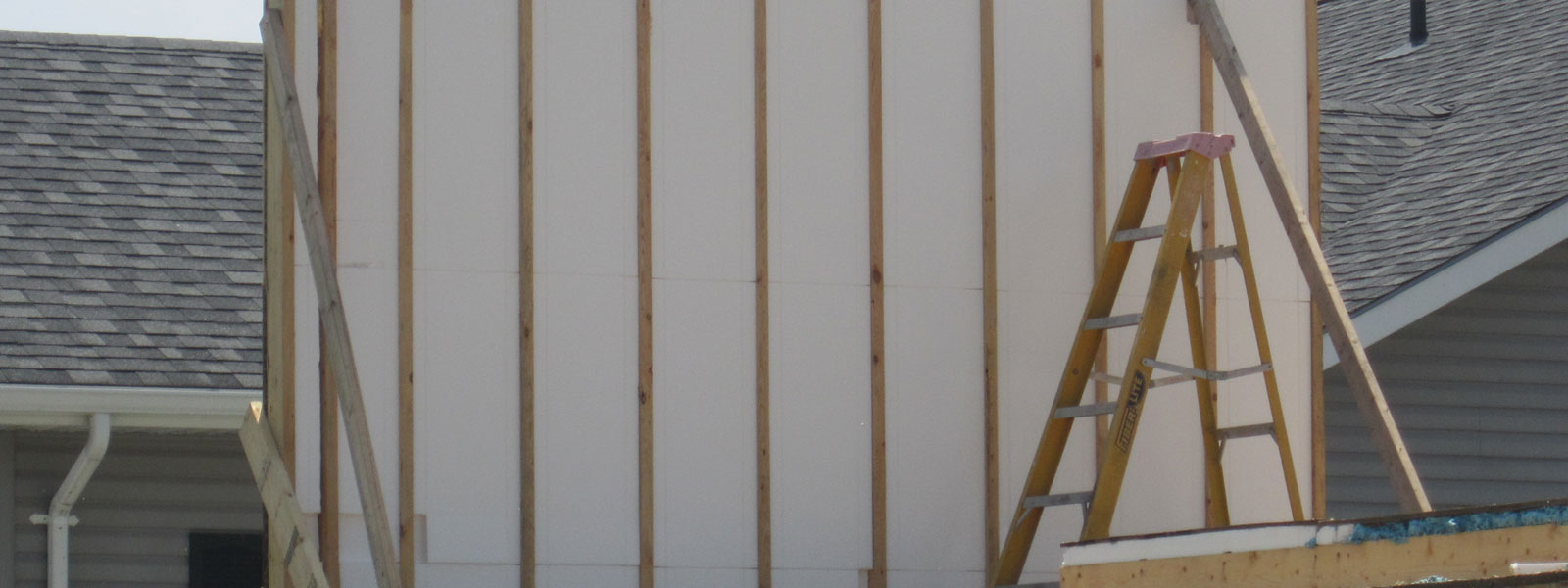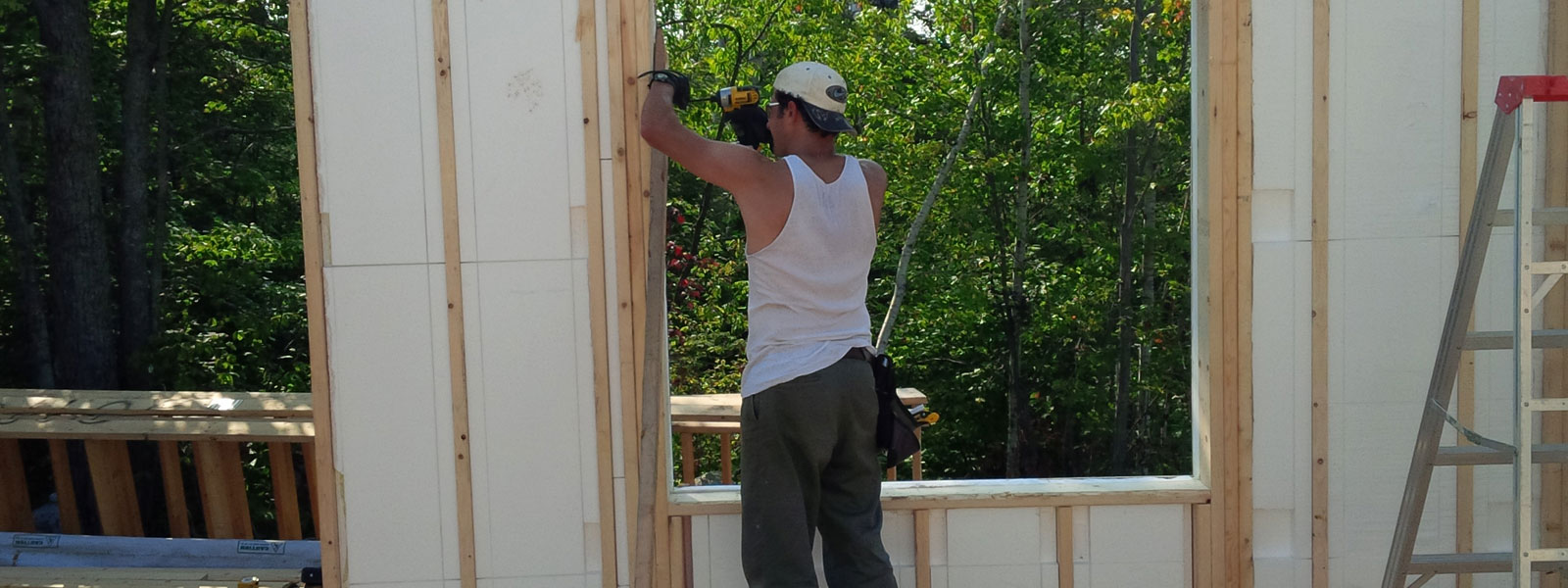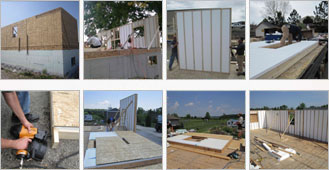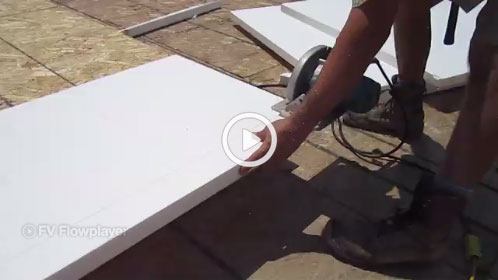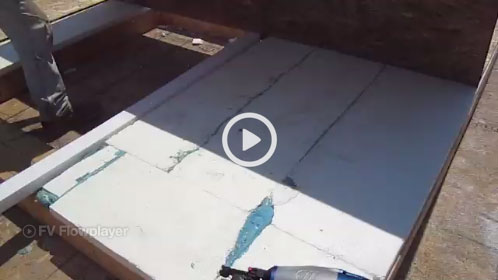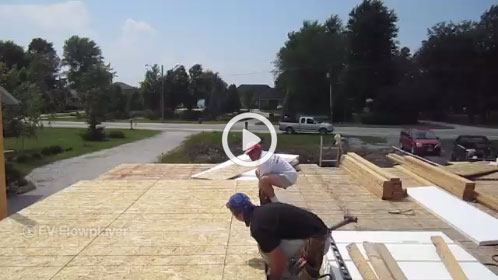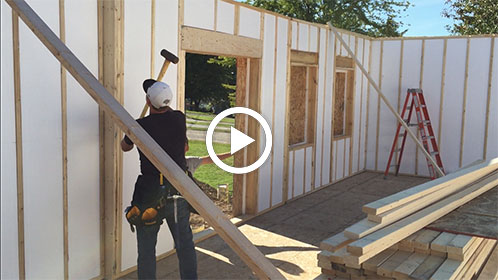DARE to compare… Insulated Panels and EZ SIPS are revolutionizing the way homes are built!
Every builder has a way they like to build. With EZ SIPS you get SUPERIOR THERMAL PROTECTION without changing the way you frame!
Here’s how EZ SIPS stack up against the competition:
Conventional SIPS
Conventional structural insulated panels (SIPS) are a sandwich of oriented strand board (OSB) and foam. Entire walls are pre-fabricated, with openings cut out, and trucked to the job site. They are then stood with the help of a crane, and joined together. Factory SIPS systems typically cost between $7.00 USD and $9.00 USD per square foot of wall. They are tough for sub-trades to deal with, as they must fish wires through chases buried deep in the foam and cut holes in the OSB. And because you need to fur out the walls and / or build plumbing chases, you’re into more work and more material.
Aside from the hassle of fishing wires (and cutting holes), conventional SIPS are great as long as you don’t mind paying extra for your walls, for engineering costs, for crane rental and often for long-distance shipping. Also as long as your foundation is perfectly square and level. If the floor deckis slightly off level, panels will not line up properly with each other, requiring cement grinding or messy on-site panel modification.
EZ SIPS
EZ SIPS are rigid 6¾” x 4’ x wall height foam panels made from precisely routered expanded polystyrene EPS insulation™. EPS is a rigid, durable, non-toxic closed-cell foam. It doesn’t permit air or moisture transfer. Because of this, EZ SIPS’ R-VALUE CLIMBS as the temperature differential increases. EZ SIPS’ rating of R-28 at 75F (24C) increases to R-33 at 9F (-13C).
EZ SIPS are EZ to install, don’t out-gas, prevent convection, and when you foam the seam between panels with a can of sprayfoam they form a virtually airtight building envelope. EZ SIPS leave the inner wall open, with removable, replaceable surface channels for wiring and plumbing. Walls made with EZ SIPS cost $3.50 USD to $4.50 USD per square foot IN TOTAL! For the entire wall! That’s studs, plates, OSB and EZ SIPS panels!
Fiberglass Batts
Fiberglass is the least expensive insulating option. There’s a reason for that. As the temperature differential increases—that’s the difference between outside and inside temperature—the R-value of fiberglass decreases. That’s because convection causes air to circulate between hot and cold surfaces within the wall cavity. Batt insulation can also slump down over time, leaving parts of the wall uninsulated.
These are things that R-value ratings don’t take into account. The R-value testing environment is a constant 75F (24C) with neither wind nor HVAC-induced pressure differential. Since fiberglass is permeable, it allows convection. Vast volumes of air move very slowly within the fibers. And if building code requires you to seal batts off completely with plastic, it can cause condensation and rot. A fiberglass-insulated wall with a rating of R-21 at 75F (24C) can decrease to R-12 at 9F (-13C).
Spray foam
Closed cell spray foam—urea formaldehyde or isocyanates like polyurethane—does a great job of insulating a home if it’s applied correctly, but it does not create the THERMAL BREAK that EZ SIPS do.It’s closed cell insulation, meaning that it doesn’t permit the transfer of moisture or water. Gases from the foam are toxic; manufacturers recommend that no one enter a house for 24 hours after it has been sprayed. Those who apply the foam must wear full-body suits and gas masks. If foam is incorrectly mixed, it can take months or years to dry, during which time it continues to out-gas.
Spray foam is not cheap. It will cost you $5.00 USD to $8.00 USD per square foot to get you to R28—and it’s messy. It tends to bury wires and plumbing, making it difficult to make any modifications. That said, if applied correctly it does do a great job of insulating.
ICF
Insulated Concrete Form (ICF) walls consist of two layers of foam board with concrete poured in between. ICF eliminates the need for traditional concrete forms and it’s great for basements. You can build upper walls out of ICF too, and they insulate very well. Cost per square foot ranges from $7.50 USD to over $12.00 USD, depending on thickness and materials. While thick walls insulate well, they take up space that would otherwise be livable. With concrete pours a minimum of 4” thick, and with 2” foam board on both sides, you’re looking at a wall from a minimum 8” to well over 12” thick. In a 2,200 square foot home that can mean a loss of 250 to 500 square feet of interior space.
Where ICF shines is in building foundation walls. And since EZ SIPS provide a 1¾” thermal barrier between the stud wall and cladding, builders can have plans line up EZ SIPS foam flush with the ICF foam on the foundation for a truly impregnable building envelope.
![]() Questions? Have a look at our Frequently Asked Questions page or contact us for more information or to place your order today!
Questions? Have a look at our Frequently Asked Questions page or contact us for more information or to place your order today!

